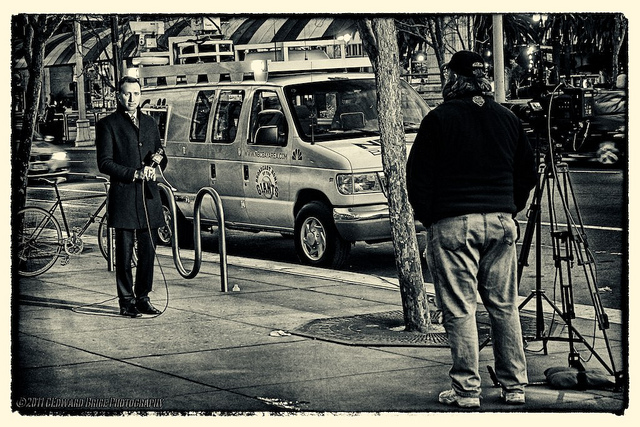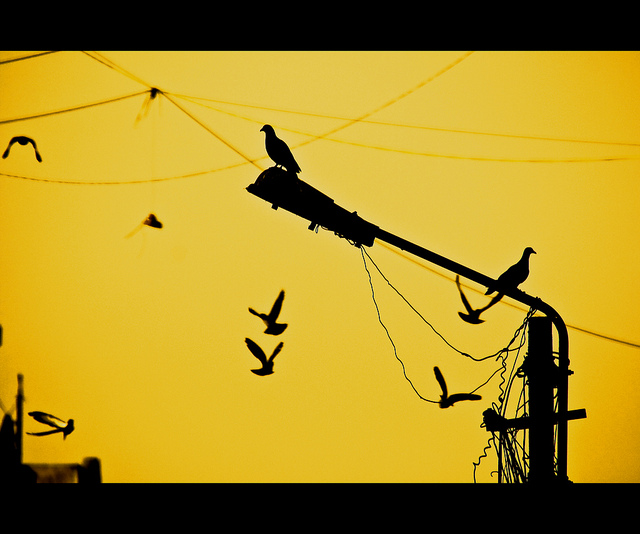
In his fabulous article, 6 Tips on Reading to Train the Writer's Eye, Rob D. Young talks about how to train yourself to read critically. (also see: 8 Tips From Chuck Wendig On How To Read Like A Writer)
1. Approach with a pen
Don't be afraid to highlight the books you read. Mark the passages that stand out to you, that romance your writers eye.
2. Be critical
Remember: No writing is flawless. In writing, as in life, there are tradeoffs. Rob mentions the following:
- clarity for lyricism
- realism for emotional power
- directness for detail
Which tradoffs work for you? Which don't?
By reading critically you can find out what kind of writer you are. Rob writes:
[B]e honest with yourself about what you like and don't like—and take it to the crucial next step: Examine why it is you don't like it. Identify the specific passages, paragraphs, choices, and plot arcs that grated on you. When you do so, even a piece you hate can be a valuable learning experience.
3. What works for you?
We've talked about tradoffs but there are many other things to notice in a text.
For example, if you found that the writer balanced a variety of sub-plots in a way that worked well for you, sketch out a diagram on how much time was devoted to each sub-plot, how those plots were rotated, and any other factors you noted.In reference to The Hunger Games Rob writes:
Each action is paired with a sensory detail, and all five core senses (sight, sound, touch, taste, and smell) are brought in by the end of paragraph 19. The suspense is developed gradually, with roughly half of the first 20 paragraphs implying the danger of District 12, the woods, or the world.
4. Talk about writing with others
It has been my experience that it is rare for two people to have the same reaction to a piece. Discovering what others thought were a text's strengths and weaknesses can be as enlightening as discovering one's own reactions.
Rob writes,
I find this strategy to be especially useful if I'm talking to someone who hates a book I liked or liked a book I hated; it's valuable to borrow their eyes to see the story from a different perspective.
5. Research how the book was received by the marketplace
Just as it is helpful to know the reactions of other readers, so it helps to know what people from different places, different cultures, different ages, and so on, think of a book. Sites like Goodreads and Amazon.com can help with this.
That said, Rob cautions that ...
... not all books will be reviewed with equal fairness. Established authors may be getting the majority of their reviews from a specific type of reader, giving you only a narrow window of insight. Don't approach the critical reception of a piece as being an absolute reflection of "how audiences respond," and remember that you don't have to write for the same audience.
6. Read the book again
I love reading old favorites just as I love re-watching past episodes of TV shows or movies.
By rereading a book you will be able to ...
... see how plot moves were foreshadowed, how early passages helped prepare for latter ones, and what specific tools were used to create the emotions, movements, and structure of the piece. Further, since you will no longer be vulnerable to suspense-based ploys, you can get a clearer vision of the writing's quality at the micro level.Rob D. Young's article is worth the read. Here's the link again: 6 Tips on Reading to Train the Writer's Eye.
Other articles you might like:
- How To Create A Press Kit- Walter Benjamin's Advice To Writers
- How To Create A Villain Your Readers Will Love To Hate
Photo link: "Waiting For You" by ||-SAM Nasim-|| by Creative Commons Attribution 2.0.









